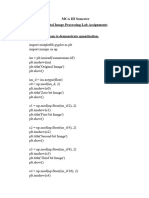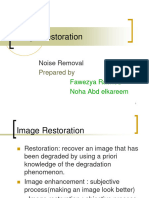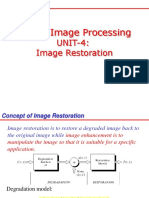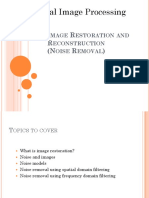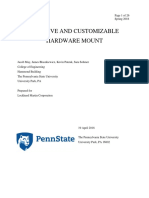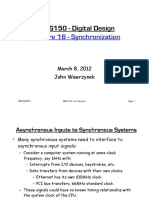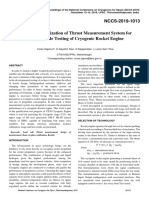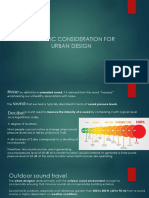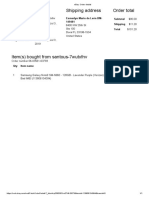0% found this document useful (0 votes)
32 views5 pagesDip Assigment
This document discusses various image restoration filters used to recover degraded images, including adaptive, band reject, band pass, notch, optimum notch, inverse, and Wiener filters. It provides Python implementations for each filter to demonstrate their functionality in reducing noise and enhancing image quality. The conclusion highlights the strengths of different filters based on the type of noise present in the images.
Uploaded by
SamCopyright
© © All Rights Reserved
We take content rights seriously. If you suspect this is your content, claim it here.
Available Formats
Download as PDF, TXT or read online on Scribd
0% found this document useful (0 votes)
32 views5 pagesDip Assigment
This document discusses various image restoration filters used to recover degraded images, including adaptive, band reject, band pass, notch, optimum notch, inverse, and Wiener filters. It provides Python implementations for each filter to demonstrate their functionality in reducing noise and enhancing image quality. The conclusion highlights the strengths of different filters based on the type of noise present in the images.
Uploaded by
SamCopyright
© © All Rights Reserved
We take content rights seriously. If you suspect this is your content, claim it here.
Available Formats
Download as PDF, TXT or read online on Scribd
/ 5




















